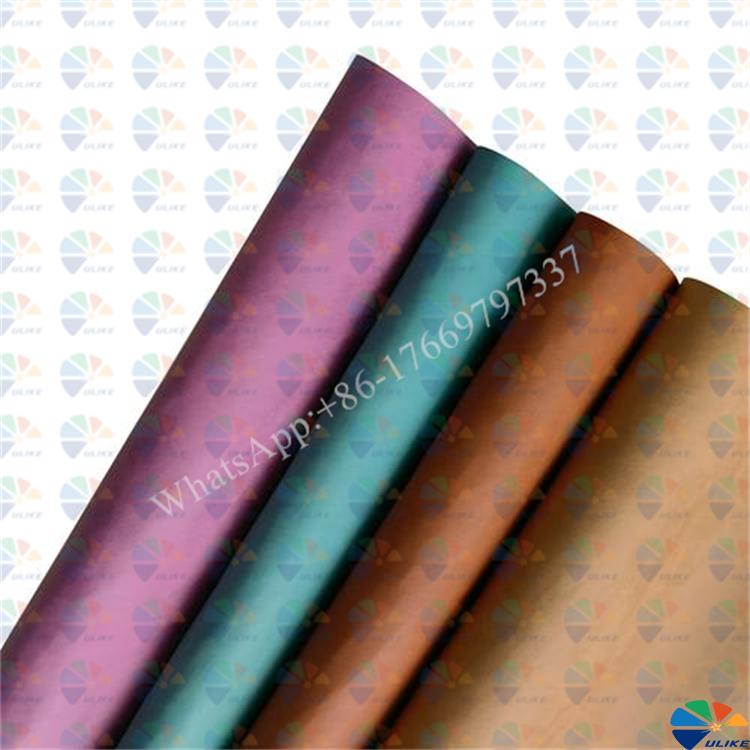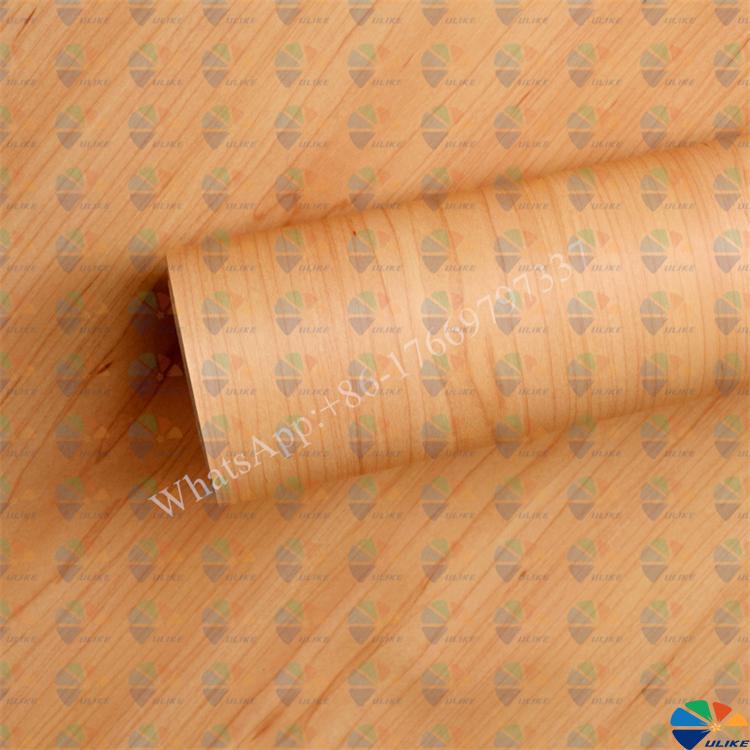The Evolution and Future of PP Lamination Film: A Journey Through Time
Introduction Polypropylene (PP) lamination film has become an indispensable material across various industries due to its versatility, durability, and environmental benefits. Its journey from inception to becoming a widely used material in modern applications is a testament to its adaptability and innovation. This article explores the history, current applications, and future prospects of PP lamination film, with a focus on its significance in various industries.
The Origins of PP Lamination Film The story of PP lamination film began in the mid-20th century when polypropylene was first polymerized in 1954 by the Italian chemist Giulio Natta. Recognized for its lightweight, chemical resistance, and ability to be easily molded into different shapes, polypropylene quickly gained popularity in various industries. Initially, PP was used primarily for packaging and textiles, but as the demand for more durable and versatile materials grew, the concept of laminating polypropylene with other materials to enhance its properties was born.
In the early stages, PP lamination film was used primarily for packaging applications, where it provided an effective barrier against moisture, oxygen, and other contaminants. The film’s ability to adhere to a wide range of substrates, coupled with its clarity and strength, made it an ideal choice for food packaging, where product protection and visibility are paramount.
The Growth of PP Lamination Film in Modern Applications Over the years, the applications of PP lamination film expanded far beyond packaging. The automotive industry, construction sector, and consumer goods market all began to recognize the benefits of using PP lamination film for a variety of purposes.
In the automotive industry, PP lamination film became a popular choice for interior and exterior components, such as dashboards, door panels, and trim pieces. The film’s resistance to UV radiation, scratches, and chemicals ensured that these components could withstand the rigors of daily use while maintaining their aesthetic appeal. Additionally, the lightweight nature of PP lamination film contributed to overall vehicle weight reduction, a critical factor in improving fuel efficiency.
The construction industry also saw the potential of PP lamination film in enhancing the durability and appearance of surfaces like countertops, cabinets, and wall panels. The film’s ability to replicate the look of natural materials, such as wood or stone, while offering superior resistance to moisture and chemicals, made it an attractive option for both residential and commercial applications.
In the consumer goods sector, PP lamination film was used to laminate various household items, such as furniture, appliances, and electronics. Its protective qualities, combined with its ability to enhance the aesthetic appeal of products, made it a valuable addition to a wide range of consumer products.
The Future of PP Lamination Film As we look to the future, the potential for PP lamination film continues to grow. Advances in manufacturing technology are allowing for even more innovative applications of the film, with a focus on sustainability and environmental responsibility.
One of the most significant trends is the development of eco-friendly PP lamination films made from recycled materials. These films offer the same durability and versatility as traditional PP lamination films but with a reduced environmental impact. This innovation is particularly important as industries across the globe seek to reduce their carbon footprint and adopt more sustainable practices.
Furthermore, the integration of advanced printing technologies is expanding the design possibilities for PP lamination films. With the ability to create intricate patterns and textures, manufacturers can offer customized solutions that meet the specific needs of their clients.
In addition, as industries continue to evolve, the demand for materials that can withstand harsh environments, such as extreme temperatures and chemical exposure, will drive further advancements in PP lamination film technology. The future of PP lamination film is undoubtedly bright, with ongoing innovations set to enhance its performance and expand its applications even further.
Conclusion The journey of PP lamination film from its origins to its current status as a key material in various industries is a story of innovation and adaptability. As industries continue to evolve, the demand for durable, versatile, and environmentally friendly materials will ensure that PP lamination film remains a vital component of modern manufacturing. With ongoing advancements in technology and a focus on sustainability, the future of PP lamination film is poised to be as dynamic and impactful as its past.
Keywords: PP lamination film, packaging, automotive, construction, consumer goods, sustainable materials, polymer technology.


![af]() Afrikaans
Afrikaans![sq]() Albanian
Albanian![am]() Amharic
Amharic![ar]() Arabic
Arabic![fr]() French
French![es]() Spanish
Spanish![ru]() Russian
Russian![de]() German
German![hy]() Armenian
Armenian![it]() Italian
Italian![ja]() Japanese
Japanese![ko]() Korean
Korean![pt]() Portuguese
Portuguese![hi]() Hindi
Hindi![az]() Azerbaijani
Azerbaijani![ro]() Romanian
Romanian![pl]() Polish
Polish![th]() Thai
Thai![el]() Greek
Greek![eu]() Basque
Basque![en]() English
English![zh-CN]() Chinese (Simplified)
Chinese (Simplified)![zh-TW]() Chinese (Traditional)
Chinese (Traditional)![be]() Belarusian
Belarusian![bn]() Bengali
Bengali![bs]() Bosnian
Bosnian![bg]() Bulgarian
Bulgarian![ca]() Catalan
Catalan![ceb]() Cebuano
Cebuano![ny]() Chichewa
Chichewa![co]() Corsican
Corsican![hr]() Croatian
Croatian![cs]() Czech
Czech![da]() Danish
Danish![nl]() Dutch
Dutch![eo]() Esperanto
Esperanto![et]() Estonian
Estonian![tl]() Filipino
Filipino![fi]() Finnish
Finnish![fy]() Frisian
Frisian![gl]() Galician
Galician![ka]() Georgian
Georgian![gu]() Gujarati
Gujarati![ht]() Haitian Creole
Haitian Creole![ha]() Hausa
Hausa![haw]() Hawaiian
Hawaiian![iw]() Hebrew
Hebrew![hmn]() Hmong
Hmong![hu]() Hungarian
Hungarian![is]() Icelandic
Icelandic![ig]() Igbo
Igbo![id]() Indonesian
Indonesian![ga]() Irish
Irish![jw]() Javanese
Javanese![kn]() Kannada
Kannada![kk]() Kazakh
Kazakh![km]() Khmer
Khmer![ku]() Kurdish (Kurmanji)
Kurdish (Kurmanji)![ky]() Kyrgyz
Kyrgyz![lo]() Lao
Lao![la]() Latin
Latin![lv]() Latvian
Latvian![lt]() Lithuanian
Lithuanian![lb]() Luxembourgish
Luxembourgish![mk]() Macedonian
Macedonian![mg]() Malagasy
Malagasy![ms]() Malay
Malay![ml]() Malayalam
Malayalam![mt]() Maltese
Maltese![mi]() Maori
Maori![mr]() Marathi
Marathi![mn]() Mongolian
Mongolian![my]() Myanmar (Burmese)
Myanmar (Burmese)![ne]() Nepali
Nepali![no]() Norwegian
Norwegian![ps]() Pashto
Pashto![fa]() Persian
Persian![pa]() Punjabi
Punjabi![sm]() Samoan
Samoan![gd]() Scottish Gaelic
Scottish Gaelic![sr]() Serbian
Serbian![st]() Sesotho
Sesotho![sn]() Shona
Shona![sd]() Sindhi
Sindhi![si]() Sinhala
Sinhala![sk]() Slovak
Slovak![sl]() Slovenian
Slovenian![so]() Somali
Somali![su]() Sudanese
Sudanese![sw]() Swahili
Swahili![sv]() Swedish
Swedish![tg]() Tajik
Tajik![ta]() Tamil
Tamil![te]() Telugu
Telugu![tr]() Turkish
Turkish![uk]() Ukrainian
Ukrainian![ur]() Urdu
Urdu![uz]() Uzbek
Uzbek![vi]() Vietnamese
Vietnamese![cy]() Welsh
Welsh![xh]() Xhosa
Xhosa![yi]() Yiddish
Yiddish![yo]() Yoruba
Yoruba![zu]() Zulu
Zulu



